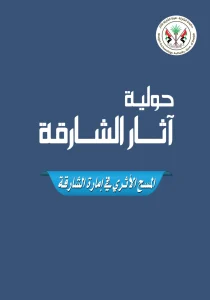Published Date : 2024
Auther : Dr. Mahmoud Hamoud
Publisher : Sharjah Archaeology Authority
Available Languages -
Archaeological investigations in Syria have revealed the remains of many species of animals that lived there for a long time before becoming extinct, including: rhinoceroses, zebras, bears, ostriches, deer, hippopotamuses, mammoths, elephants, rhinoceroses, and others. There is no doubt that the presence of these species in the region indicates the availability of an environment conducive to the survival of these species of mammals for a long period of time. These species have been exposed to extinction due to various natural and climatic factors, but the decisive factor was human action, intentionally or unintentionally. The elephant was one of the most important victims of extermination and extinction in various Syrian regions. Some remains of the elephant were found in a number of Syrian sites, the oldest of which dates back to about a million years ago, and continued to exist until the first millennium BC, with some periods of interruption. However, the density of these remains was noted at the beginning of the second millennium, and continued until the eighth century BC. The Egyptian and Assyrian archaeological, artistic and written evidence mentioned elephants and the areas where they were hunted, or the cities and centers where ivory was manufactured. The Syrian elephant, a type of Asian elephant, has sparked a wide debate among researchers regarding its origin. While many researchers believe that the Syrian elephant was imported from the Indus Valley since the second millennium BC, others believe that it is indigenous and native to this land, and is a descendant of the elephants whose remains were found in prehistoric sites, and an extension of them. This book discusses the issue of the Syrian elephant, its homeland and the areas in which it lived from western Iran to the Mediterranean, its lifestyle and its end, based on archaeological data including physical remains and written texts, reviewing the latest evidence and archaeological discoveries in this regard. The book begins with a general section that defines the characteristics and qualities of elephants. Then, in the following sections, he moves on to review the remains of elephants from different eras that were found by archaeological missions in a number of sites, as well as written texts that mention elephants, ivory products made from their ivory, and places where they were made.
The seventh section discusses the authenticity of the Syrian elephant, reviewing various opinions, some of which see it as non-local, but rather imported by social elites to satisfy the hobby of hunting and obtaining its ivory, and it lived in natural reserves under the care of local kings and their courtiers. He also presents other opinions that were based on new discoveries, and see that the Syrian elephant is authentic and lived hundreds of thousands of years ago in the Syrian environment that was very suitable for it.
As for the eighth section, it discusses the reasons and factors that led to the extinction of the Syrian elephant and its consequences on the environment, many of which were caused by humans, and a few of which were caused by nature and climate change.
The ninth chapter deals with the use of elephants in wars since the beginning of the Indians and Persians, then Alexander the Great and his successors after him, then the Carthaginian leader Hannibal and the Roman armies until the Islamic era, with mention of the most important battles in each era. The tenth and final chapter deals with the relationship between the elite and elephants in different eras and the reasons that prompted individuals in this category to care about this animal. The book concludes with some conclusions reached by the research and support the authenticity of the Syrian elephant, which became extinct from the Syrian land as a result of human greed and ignorance of the value of this noble animal, which are the same reasons that threaten to eliminate what remains of elephants in Asia and Africa, as well as threaten to eliminate many wild species. The book contains a lot of important and interesting information provided by ancient Greek and Roman written sources, as well as Arabic, about elephants, in addition to the latest findings of archaeological excavation work, which we hope will provide the Arab reader, both ordinary and specialized, with a sufficient amount of benefit and enjoyment.
SharjahANNUAL SHARJAH ARCHAEOLOGY ISSUE 13
Published Date : 2020
Publisher : Sharjah Archaeology Authority
Available Languages -
The annual magazine contains a number of articles being reports of the underwater excavation works ...
ANNUAL SHARJAH ARCHAEOLOGY ISSUE 15
Published Date :
Publisher : Sharjah Archaeology Authority
Available Languages -
It includes a number of reports on the results of archaeological excavation works in a ...


